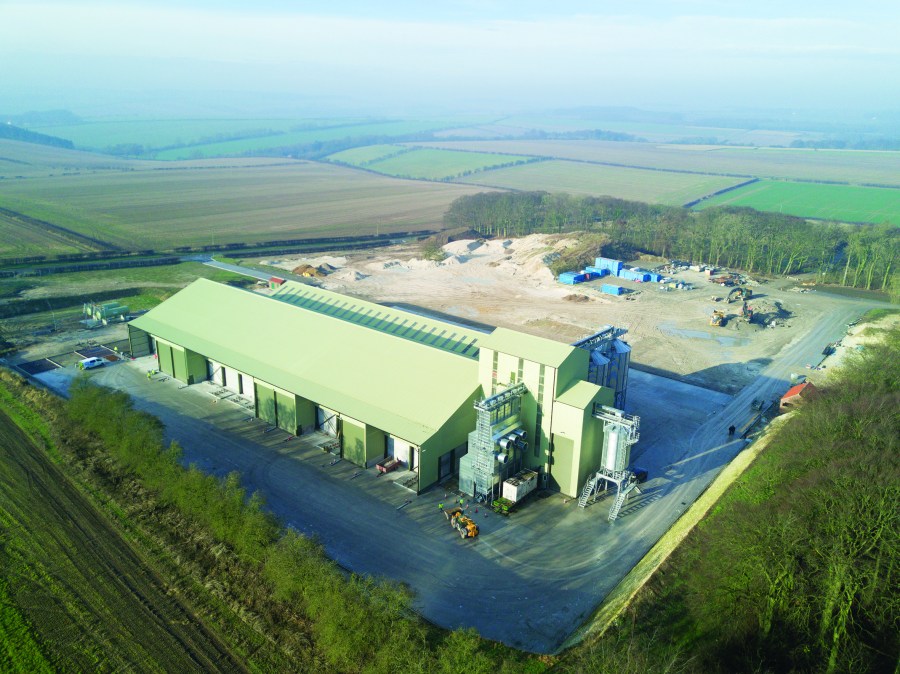Getting grain storage right can make all the difference when it comes to crop profitability. CPM explores the key considerations before investing in something new.
“While it may sound obvious, the importance of proper grain drying can’t be overstated.” CHARLES WHITE
By Charlotte Cunningham
Grain storage might not be the hottest topic on the farm, but it’s arguably one of the most crucial. With margins tighter than ever and crop quality paramount, investing in the right storage and drying infrastructure can be the difference between a profitable season and a costly disappointment.
When done well, a good storage setup protects the value of a crop, affects long-term profitability, and impacts the overall efficiency of a business. “While it may sound obvious, the importance of proper grain drying can’t be overstated,” says Charles White, director at Tornum.
“Once grain is harvested, the race begins to remove moisture quickly and safely. Failure to do so risks the development of mycotoxins and spoilage, both of which can ruin a crop’s marketability.
“We’re aiming to get that grain dried as fast as possible to preserve quality, prevent waste and reduce risks. Then it’s all about getting it cool and stable – ideally below 10oC by Christmas – to ensure long-term storage without deterioration.”
So, where should growers begin when thinking about a new storage system? “First and foremost, ask: what am I trying to achieve?” advises Charles. “Budget is obviously a key factor, but so is understanding how much grain you’re moving and how fast it comes off the field. That’ll influence the size and spec of the system you require.”
For smaller farms, simpler and lower-capital systems might suffice, such as 10t/hr dryers with handling equipment at around 30t/hr. But larger arable businesses – those with more than 400ha to store – are frequently installing 40t/hr dryers with handling capabilities of up to 80t/hr or more, he explains.
In terms of the physical storage itself, this comes down to a decision between silo stores or flat stores – and a lot of this decision making will be influenced by cropping plans and whether short- or long-term storage is planned.
“Silo storage is ideal for large, single-crop volumes and offers efficient vertical storage with minimal footprint,” explains Charles. “However, it comes with reduced flexibility. Silos are typically designed for one crop type, so if a farmer changes their rotation or volume in future seasons, the setup may become less optimal.”
Flat stores, on the other hand, offer adaptability, he adds. “Not only can they be divided to hold different crop types, but once emptied, they can double up for machinery storage or other uses. If designed correctly with proper aeration and control systems, these buildings can qualify for up to 100% capital allowances – an important financial consideration and a huge incentive.
“It’s important to think beyond just the physical storage and instead also consider long-term value, energy efficiency, and how it fits with the rest of the farm.”
Another area to consider is planning permission. Many grain stores are now being designed to fall within the 1500m2 permitted development allowance, enabling farms to avoid lengthy and costly full planning applications. “We’re seeing more and more projects go down that route – it just makes the process quicker and easier,” says Charles.
Beyond capacity, developments in technology that complement storage systems are aiding energy efficiency, with Tornum’s Intelligent Dryer Control (IDC) system a good example of how tech is helping to reduce energy waste and preserve crop quality.
IDC uses advanced sensors to monitor incoming and outgoing moisture levels in real time. By eliminating over-drying – which Charles says is a surprisingly common issue – farmers can significantly reduce fuel use and minimise unnecessary weight loss, both of which have a direct financial impact. “It’s one of the most effective tools we offer,” says Charles. “It can show real savings straight away and most of our systems now come with IDC as standard.”
“Over-drying is where a lot of money gets lost. You’re wasting energy and losing grain weight,” highlights Charles.
Looking at the numbers, while the industry standard for drying is 13%, bumping this to 14% can typically add up to 20% to energy bills while also reducing drier capacity by up to 16%. “Our system constantly monitors incoming and outgoing moisture, adjusting the drying process in real time. It’s saving significant energy and reducing unnecessary weight loss.”
For flat stores and post-storage drying, Tornum also supports Barn Owl Wireless – an intelligent ventilation system which, rather than pushing air across an entire floor, pinpoints hotspots and ventilates only where required.
The result? Up to 40% energy savings and better grain preservation. “It uses real-time humidity and temperature data to ensure it only comes on when the conditions are right, so for many it’s a smart and cost-effective investment,” explains Charles.
Grain cleanliness is another growing concern and something to factor in when planning new storage, he says. “We’re seeing more interest in optical sorters for removing blackgrass, ergot and other contaminants. It used to be a niche product – now it’s becoming more mainstream.”
Using alternative fuels for drying is also coming to the fore. Tornum has worked with clients using biomass and hot water coils, although Charles notes these systems require significant boiler capacity – usually a megawatt or more – to make a real impact.
“We know storage isn’t glamourous but investing in smart, efficient and flexible infrastructure is more important than ever, and with the right solutions, farmers really can help to reduce waste and future-proof their businesses.”
This article was taken from the latest issue of CPM. Read the article in full here.
For more articles like this, subscribe here.
Sign up for Crop Production Magazine’s FREE e-newsletter here.




